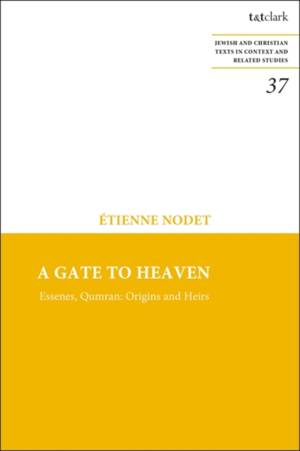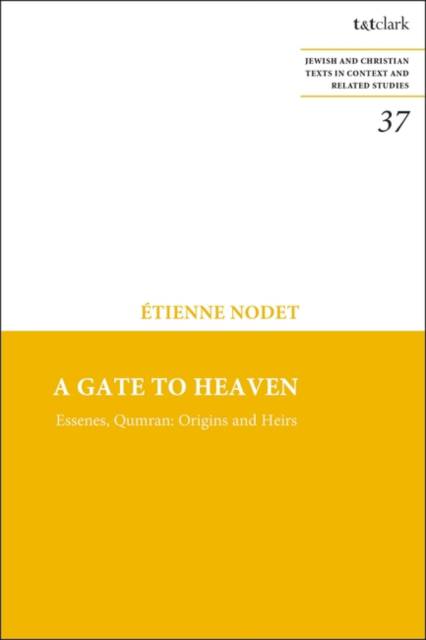
Bedankt voor het vertrouwen het afgelopen jaar! Om jou te bedanken bieden we GRATIS verzending (in België) aan op alles gedurende de hele maand januari.
- Afhalen na 1 uur in een winkel met voorraad
- In januari gratis thuislevering in België
- Ruim aanbod met 7 miljoen producten
Bedankt voor het vertrouwen het afgelopen jaar! Om jou te bedanken bieden we GRATIS verzending (in België) aan op alles gedurende de hele maand januari.
- Afhalen na 1 uur in een winkel met voorraad
- In januari gratis thuislevering in België
- Ruim aanbod met 7 miljoen producten
Zoeken
Omschrijving
Etienne Nodet proposes that Qumran functioned as a pilgrimage site for the Essenes from the 1st century BC onwards. Nodet suggests that the Essenes were scattered everywhere within Palestine in rural communities and that they used to commemorate a renewal of the early Israelites' entrance into the Promised Land, after crossing the Jordan river and celebrating Passover at Gilgal with Joshua, Moses' heir. The Essene dead were moved to be buried at Qumran in a well-organized graveyard, as the place was deemed to be a kind of gate to heaven.
Nodet shows how the Jewish movement of the Essenes did not did not disappear after the war in 70 CE, rather its customs had a strong influence upon early Christianity and Rabbinic Judaism. The chapters of this book examine the Essenes in the period after the war in Jerusalem, showing how this community developed and its longer term significance. This is linked to the texts of the New Testament, to the writings of Josephus and to the Qumran community's own documents, the Dead Sea Scrolls.
Nodet shows how the Jewish movement of the Essenes did not did not disappear after the war in 70 CE, rather its customs had a strong influence upon early Christianity and Rabbinic Judaism. The chapters of this book examine the Essenes in the period after the war in Jerusalem, showing how this community developed and its longer term significance. This is linked to the texts of the New Testament, to the writings of Josephus and to the Qumran community's own documents, the Dead Sea Scrolls.
Specificaties
Betrokkenen
- Auteur(s):
- Uitgeverij:
Inhoud
- Aantal bladzijden:
- 252
- Taal:
- Engels
- Reeks:
Eigenschappen
- Productcode (EAN):
- 9780567709714
- Verschijningsdatum:
- 1/06/2023
- Uitvoering:
- Hardcover
- Formaat:
- Genaaid
- Afmetingen:
- 156 mm x 234 mm
- Gewicht:
- 530 g

Alleen bij Standaard Boekhandel
+ 390 punten op je klantenkaart van Standaard Boekhandel
Beoordelingen
We publiceren alleen reviews die voldoen aan de voorwaarden voor reviews. Bekijk onze voorwaarden voor reviews.









